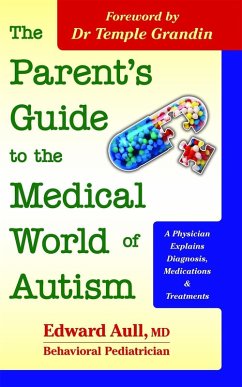This book was written with the intention of helping families and professionals understand the difficulties and nuances of using medications to treat patients with autism spectrum disorders. Hopefully, after reading this book, you will understand some of the difficulties with using medication, and you'll understand why certain responses to treatment may be acceptable and some not. I hope it will be especially helpful to you if you have previously given medication a try without good success and you would be willing to give it a second chance. I hope to explain why medications may have met with poor success and why it may be worthwhile to give them another trial.
Since the writing of this book, the 5th edition of the Diagnostic and Statistical Manual of Mental Disorders (DSM-5) has been finalized and published. Severe autism, moderate autism, high-functioning autism, Asperger's syndrome, and pervasive developmental disorders-not otherwise specified have been subsumed under autism spectrum disorder. The autism spectrum is then divided by severity levels, which are dependent on the level of support required for social communication and restricted, repetitive behaviors.
Throughout this book, however, I am going to continue to use the DSM-IV terminology. I believe the older terminology is easier to understand, and I believe it will continue to be used by both professionals and families. It should be noted, however, that some of the patients I have written about who have milder autism may no longer meet the DSM-5 criteria for an autism spectrum disorder. Instead, they will meet the criteria for social (pragmatic) communication disorder. However, I believe many patients who meet the criteria for social communication disorder will benefit from medication treatments that are used for patients with autism spectrum disorders.
Since the writing of this book, the 5th edition of the Diagnostic and Statistical Manual of Mental Disorders (DSM-5) has been finalized and published. Severe autism, moderate autism, high-functioning autism, Asperger's syndrome, and pervasive developmental disorders-not otherwise specified have been subsumed under autism spectrum disorder. The autism spectrum is then divided by severity levels, which are dependent on the level of support required for social communication and restricted, repetitive behaviors.
Throughout this book, however, I am going to continue to use the DSM-IV terminology. I believe the older terminology is easier to understand, and I believe it will continue to be used by both professionals and families. It should be noted, however, that some of the patients I have written about who have milder autism may no longer meet the DSM-5 criteria for an autism spectrum disorder. Instead, they will meet the criteria for social (pragmatic) communication disorder. However, I believe many patients who meet the criteria for social communication disorder will benefit from medication treatments that are used for patients with autism spectrum disorders.
Dieser Download kann aus rechtlichen Gründen nur mit Rechnungsadresse in A, D ausgeliefert werden.


